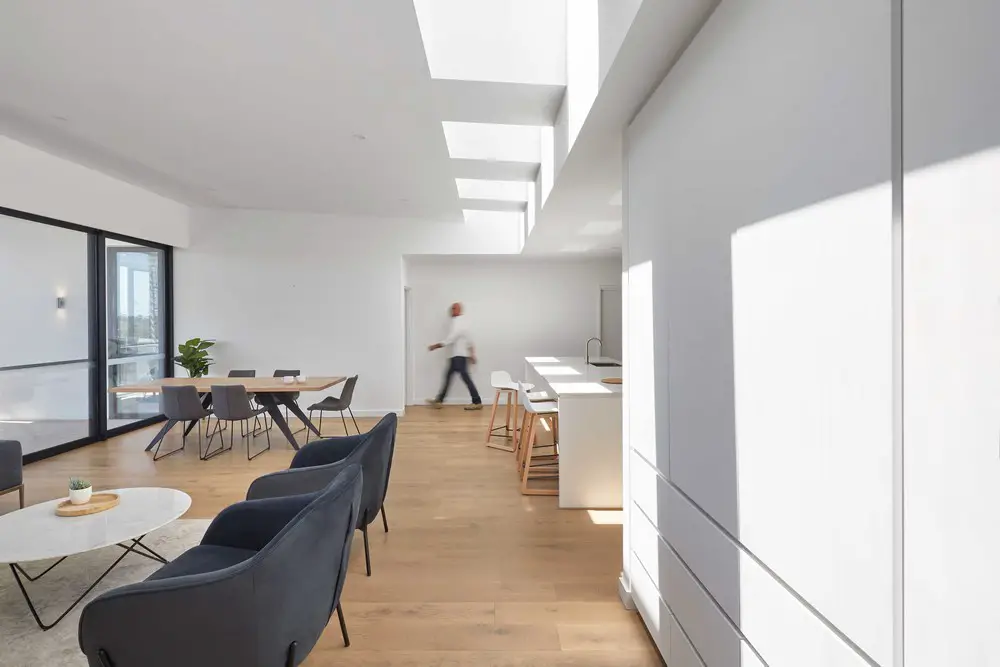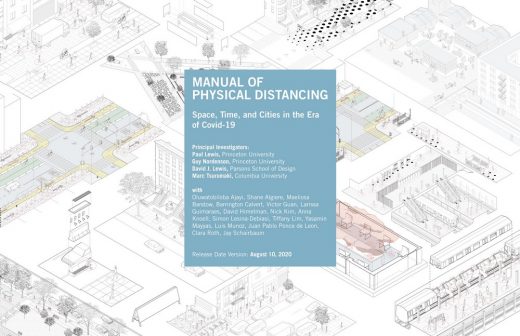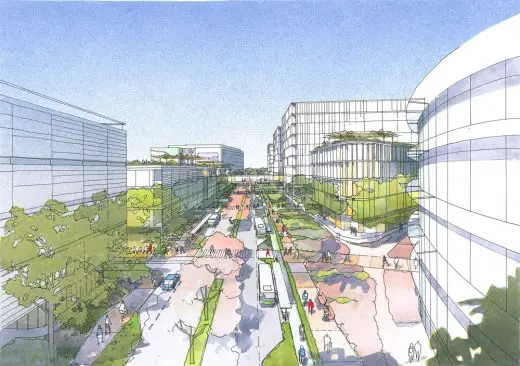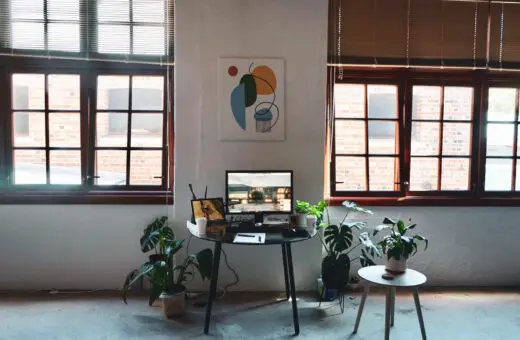Coronavirus home design impact advice, Architects COVID-19 House tips, Pandemic property issues
How COVID-19 changes design of homes?
4 June 2020
Residential Portfolio Leader, Tim Boekhoorn from Hames Sharley has written this piece which discusses the changes we will see through connection, work/life balance, flexibility, landscape and health & wellness as a result of COVID-19.
Recently completed project, Essence Apartments in Perth, Western Australia:
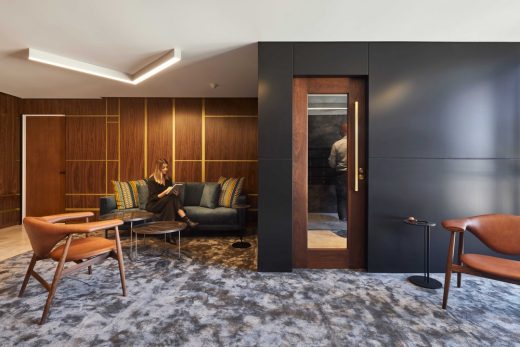
photograph : Douglas Mark Black
Impact COVID19 will have on the design of our homes
Rethinking design: will our homes changes for the better?
It’s times like these we reset the clock. The Coronavirus pandemic has forced us to take stock; to determine what’s important and what’s disposable in our lives. Despite our rapidly changing world, what is evident and consistent is people’s desire to feel connected to a larger network.
Not just our family networks, but our work and sport environments; our local neighbourhoods too. Those simple acts of passing a neighbour, saying hi to the postman, or driving past family or friends, are the seemingly insignificant acts which bring such joy to our day. And in the midst of this pandemic, never before has the old adage “you don’t know what you’ve got until it is gone”, rung more true.
As we stepped away from the hustle and bustle of our pre-COVID-19 lives and rediscovered what’s important, it’s not just the need for connectivity which has become glaringly apparent. Weeks spent in self-isolation saw us re-evaluate what’s important in our homes. Clutter became claustrophobic, while functionality and purpose are no longer ‘nice to haves’. There is no doubt that the period spent in lockdown will influence how we design homes in the future.
Getting the house in order
Like many families, we had to swiftly adjust to social distancing measures and bunker down for an indeterminate number of months. We decluttered the house to rid unwanted hoardings; spent weekends at Bunnings stocking up on supplies, and made to-do lists aiming to tackle the many postponed household jobs in a bid to bring us a sense of order. We added more shelving to aid organisation and brought in more plants to enhance the aesthetics.
And of course, we had to add additional workspaces to accommodate for two of us working from home and four children home schooling – our home was completely transformed.
After the changes we made during the height of the pandemic, I doubt my son and I will be laughing dismissively at our favourite TV show, Doomsday Preppers, in the same way again.
Essence Apartments, Perth, WA:
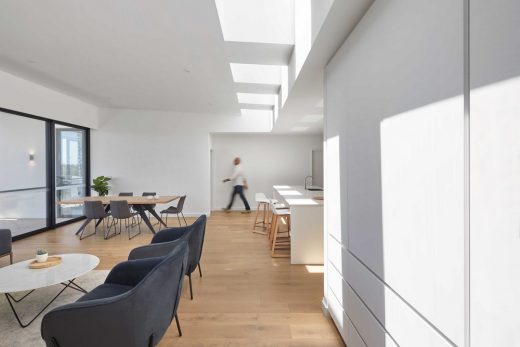
photo : Douglas Mark Black
Considered design
To get us through lockdown, we had to develop habits and spaces that allowed us to delineate work and play, allowing us to focus on family, health and work in equal measure. It was the only way to stay sane.
However, just as the pandemic magnified our need for social interaction, it also highlighted the need to rethink the way we design our homes. In the future, we can expect to see home design that is flexible and considerate, that is focused on community, nature and well-being. We can expect to reshape the way we design our homes to focus on the following elements:
- Connection: One this is clear, people missed their ability to connect with one another. Although we connected through various applications like Zoom and Houseparty, people missed the face to face interactions with loved ones. Making allowances for different social interaction will be critically important in future home designs; such as a place to greet guests and entertain, whether it’s for big celebrations or intimate dinner parties.
- Work/life balance: as we step back out into the blue I am sure many of us have no doubt made promises to be home for dinner more often, to spend quality time with the family, to catch up with siblings, parents and friends more regularly. This is what creates community; and design needs to facilitate this connection through spaces and scales to allow this to happen. To provide inviting spaces that engage all the senses to allow people to enjoy these moments as they have proved to be the real value in people’s lives. These spaces can be private or public, they just need to be available and accessible. Acoustics, light and space all play their role in the quality of the engagement.
- Flexibility in design:
Flexibility has always been talked about but rarely executed well. However, during lockdown we transformed our homes very quickly to include offices, schools, playgrounds, gymnasiums and entertainment hubs. Future home design should us allow the flexibility and the understanding that you need a balance of open plan living for connectivity and compartmentalisation for concentration and contemplation.Clever use of space, storage and IT allows us to be adaptable and the ability to put our things away at the end of the day will be important. The home office may return as people have found huge advantages from working from home, but there will always be a need to connect with the workplace so this space should be usable but flexible in its approach
- Landscape:
Our ability to connect to nature has always been important but this was amplified during the pandemic. Plant sales saw a surge in sales over the last few months as people looked to bring the outdoors in.The desire to get out of the house for exercise, to take a walk along the beach or in the park – our need to experience nature as a calming antidote to the stress of the pandemic was evident so we brought the outdoors in. Mental and physical health is directly linked with our ability to connect to nature, so as we move forward, we can expect to see the integration of landscape in both the public and private realm, such as edible gardens, urban orchards and a general intertwining of nature and design a real focus for developers and residents.
- Health & wellness:
Just as we saw a reconnection with nature, the pandemic also created a renewed focus on health. After all, there’s nothing like a pandemic to make someone consider their health and immunity! With gyms closed, home exercise spiked and bike shops recorded record sales. Post-pandemic we can also expect to see home design shift to ensure appropriate paces for wellness and exercise.
The simple things in live
The COVID-19 pandemic turned the world upside down. Social distancing and halted economies have completely disrupted our lives and will do for months, if not years, to come.
But good things have come out of this too. Families have reconnected and embraced slow living principals, parents working from home has reduced travel time and traffic delays, while a renewed focus on health and wellbeing has seen us exercising more, eating better and connecting with nature. As we now look to life beyond lockdown, the changing values of consumers will impact the way we design homes for the future. And I, for one, believe it’s a change for the better.
Previously on e-architect:
COVID-19 Crisis Impact on Buildings
Manual of Physical Distancing – Spatial Impact of COVID19
Rethinking design: Going viral – how the coronavirus will affect urban design
How COVID-19 changes urban design
How COVID-19 changes the way we work
Hames Sharley employees during a Zoom meeting:
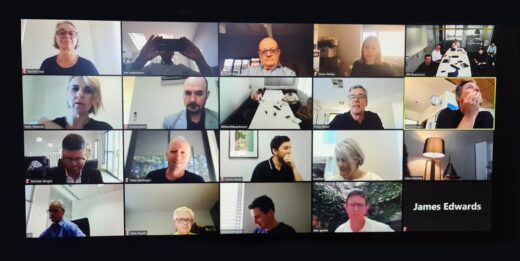
Hames Sharley’s response to COVID-19 virus.
Database for Quarantined Architects
Livin Student Housing, 21-27 City Road
Architects: Holder Mathias
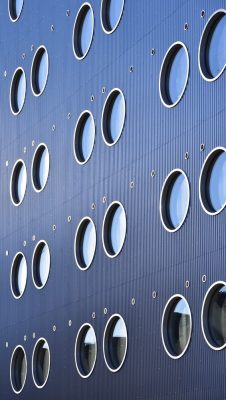
photo : David Gallimore
Livin Student Housing in Cardiff
Coronavirus Impact
The impact of coronavirus on the property market
Coronavirus on the property market
Coronavirus (COVID-19): UK government response.
Comments / photos for the How COVID-19 changes home design – Coronavirus Impact for houses page welcome

